(198079 products available)


































































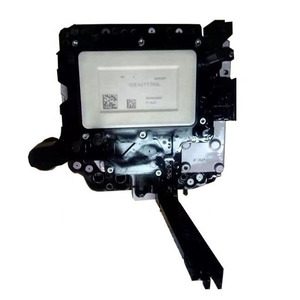

















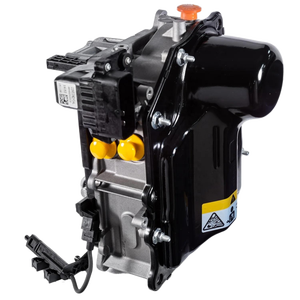
































 Ready to Ship
Ready to Ship









































































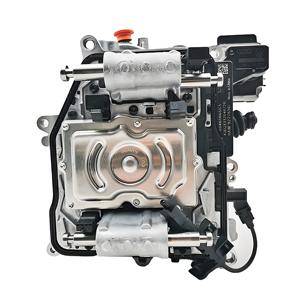
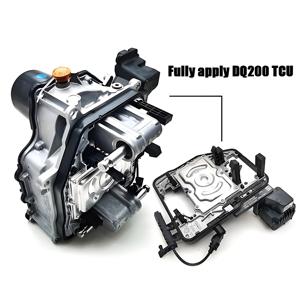

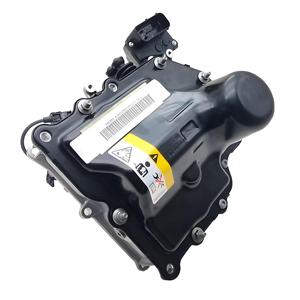
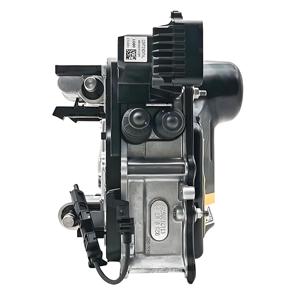
Mechatronic refers to the combination of mechanics, electronics, computer science, and control engineering to design and create intelligent systems and products. Mechatronic encompasses a wide range of products, including robotics, autonomous vehicles, medical devices, and smart home appliances. However, here are some common types of mechatronic systems:
Robotic systems
Robotic systems are perhaps the most common mechatronic systems people are familiar with. These are electromechanical systems that integrate mechatronic systems to assist and take over human tasks. They range from simple industrial robots used in assembly lines to complex humanoid or service robots. Generally, mechatronic robots comprise mechanical structures (e.g., arms, legs, or bodies), sensors (e.g., cameras, LIDAR, or tactile sensors), actuators (e.g., motors, servos, or pneumatic systems), and control algorithms for processing data and making decisions.
Automotive mechatronics
Modern vehicles have adopted mechatronic systems to enhance performance, safety, and comfort. For instance, control systems (e.g., ABS, ESC, and TCS) use sensors to monitor vehicle dynamics and control actuators (e.g., brakes and throttle) to improve stability and safety. Moreover, modern vehicles integrate mechatronic systems for engine control, emission reduction, and fuel efficiency enhancement.
Aerospace mechatronics
Aerospace systems rely heavily on mechatronic systems for control, navigation, and communication. Flight control systems use sensors to monitor aircraft dynamics and control surfaces (e.g., ailerons, elevators, and rudders) for stability and control during flight. Moreover, mechatronic systems are integrated into unmanned aerial vehicles (UAVs) for autonomous navigation, surveillance, and data collection.
Medical mechatronic devices
Mechatronic systems are widely used in medical devices to enhance precision, control, and data processing capabilities. Surgical robots, like the da Vinci Surgical System, integrate mechatronic systems for minimally invasive surgeries, offering surgeons precision and control. Diagnostic and therapeutic devices (e.g., MRI machines, prosthetics with sensors and actuators, and implantable devices) also use mechatronic systems to enhance healthcare delivery and patient treatment.
Consumer electronics
Mechatronic systems are an integral part of modern consumer electronics devices, enhancing functionality and performance. For instance, cameras (e.g., autofocus systems, image stabilization mechanisms, and zoom lenses) use mechatronic systems for image capture and processing. Mobile devices and computing systems (e.g., touchscreens, sensors for motion detection, and camera modules) integrate mechatronic systems for user interfaces and interaction) to enhance user experience and device functionality.
Home appliance mechatronics
Modern home appliances (e.g., washing machines, refrigerators, microwaves, and vacuum cleaners) integrate mechatronic systems for automation, control, and energy efficiency. Control systems (e.g., microcontrollers, sensors, and actuators) in home appliances enable precise control of processes (e.g., washing cycles, temperature regulation, and cooking settings), improving energy efficiency and user convenience.
Understanding the specifications and maintenance requirements of mechatronic systems is vital for ensuring optimal performance and reliability.
Regular Inspection:
The first step in maintaining mechatronic components is to conduct regular inspections. This entails visually examining the hardware, wiring, and mechanical parts for any evident damage, wear, or irregularities. Additionally, the software systems and user interfaces must be inspected for updates or error messages that may arise.
Lubrication and Mechanical Maintenance:
Lubrication is an essential part of maintaining the mechanical components of mechatronic systems. This involves using the recommended lubricants on moving parts such as actuators, motors, and gears to minimize friction and avoid premature wear. Furthermore, mechanical components such as sensors and linkages should be inspected for alignment and wear. Any loose connections should be tightened, and worn-out parts should be replaced to ensure accurate measurement and reliable actuation.
Electrical Maintenance:
Mechatronic systems depend on electrical power for functioning. Thus, it is necessary to inspect the electrical components like power supplies, wiring, and connectors regularly. This ensures secure connections and checks for signs of corrosion or damage. Furthermore, electrical components such as sensors and feedback systems should be calibrated routinely to ensure accurate measurements and reliable control.
Software Updates and Diagnostics:
Software plays an important part in controlling and coordinating mechatronic systems. Therefore, it is important to ensure that the software is updated regularly to the manufacturer's specifications. This includes installing bug fixes, performance enhancements, and new features. Additionally, diagnostic tools should be used to monitor the performance of mechatronic systems. These diagnostic tools can detect errors, track performance indicators, and allow for proactive maintenance and troubleshooting.
Environmental Considerations:
Mechatronic systems are often sensitive to environmental factors such as temperature, humidity, and dust. Ensuring that they operate within the specified environmental limits is important. This includes placing systems in well-ventilated areas and protecting them from moisture and extreme temperatures. Dust and contaminants can affect the performance of sensors and other components. Therefore, regular cleaning should be performed using appropriate cleaning agents and methods.
Training and Safety:
Personnel operating and maintaining mechatronic systems should be adequately trained. This training should cover system operation, maintenance procedures, and safety issues. Furthermore, safety measures should be put in place to protect personnel and equipment while maintaining mechatronic systems. This entails adhering to electrical safety guidelines, handling mechanical components safely, and using appropriate protective equipment.
When it comes to choosing mechatronic products, several factors need to be considered in order to meet business requirements and ensure a seamless supply chain operation. Here are some of them:
Quality:
Quality is the first thing to consider when sourcing mechatronic products. Low-quality products will disrupt the supply chain and affect business operations. Therefore, buyers should look for high-quality mechatronic products, which might be costly but are a worthy investment.
Supplier reliability:
Business buyers should partner with reliable mechatronic part suppliers. The supplier should have a good reputation of delivering products on time and providing after-sale services.
Customization:
Business buyers can get customized mechatronic products to meet their specific business requirements. Therefore, it’s important to source products from manufacturers that offer customization services.
Technical support:
Technical support is an important factor to consider when choosing mechatronic products. Business buyers should partner with suppliers offering technical support to assist in system integration, product training, and troubleshooting.
Compatibility:
Businesses often have existing systems in place. Therefore, it’s important to choose mechatronic products that are compatible with the existing systems. This will reduce integration challenges and ensure seamless operation.
Scalability:
Business buyers should consider the scalability of mechatronic products. Choose products that can be scaled to meet business growth and future requirements.
Energy efficiency:
Due to the rising energy costs, businesses are looking for ways to reduce energy consumption. Therefore, when choosing mechatronic products, consider energy-efficient products. This will help the business save energy costs in the long run.
It is important to note that replacing mechatronic components requires specialized knowledge and expertise. With that said, here are general steps on how to replace mechatronic:
Identify the mechatronic component:
Find out which mechatronic component in the system is not working. This is important because it reduces the risk of further damaging the system by opening it up without knowing what is wrong.
Get the right tools:
Every mechatronic component requires a different set of tools to open the casing. Also, make sure to get the right tools to replace the component.
Disassemble the system:
Carefully take apart the system to get to the mechatronic component. Remember to take pictures before disassembling so that the system can be put back together, following the guide.
Remove the old component:
This is done by disconnecting it from the power supply and removing any screws or fasteners holding it in place. It is important to do this carefully so as not to damage other parts of the system.
Install the new component:
This is done by installing it in the same way it was removed and following the manufacturer's instructions.
Reassemble the system:
This is done by following the steps in the guide and taking apart the system in reverse order. Once this is done, the mechatronic system can be powered on and tested to ensure it is working correctly.
Q1: What are the common problems with mechatronic?
A1: Mechatronic can have several common problems, such as hardware failure, software bugs, lack of maintenance, environmental factors, and human error. To solve these problems, users must understand the causes and take appropriate measures to address them.
Q2: What is the future of mechatronic?
A2: The future of mechatronic is bright and has great potential. It is expected to develop in the following aspects: intelligence, integration, miniaturization, human-computer interaction, sustainability, and interdisciplinary collaboration. These trends will further strengthen the role of mechatronic in various fields and promote its innovation and application.
Q2: What is the future of mechatronic?
A2: The future of mechatronic is bright and has great potential. It is expected to develop in the following aspects: intelligence, integration, miniaturization, human-computer interaction, sustainability, and interdisciplinary collaboration. These trends will further strengthen the role of mechatronic in various fields and promote its innovation and application.
Q3: What is mechatronic engineering used for?
A3: Mechatronic engineering is applied in various fields. For example, in the automotive industry, it is used for automatic transmission control and engine management systems; in the robotics field, it is used for robot design and control; in the manufacturing industry, it is used for mechatronic systems like CNC machines.